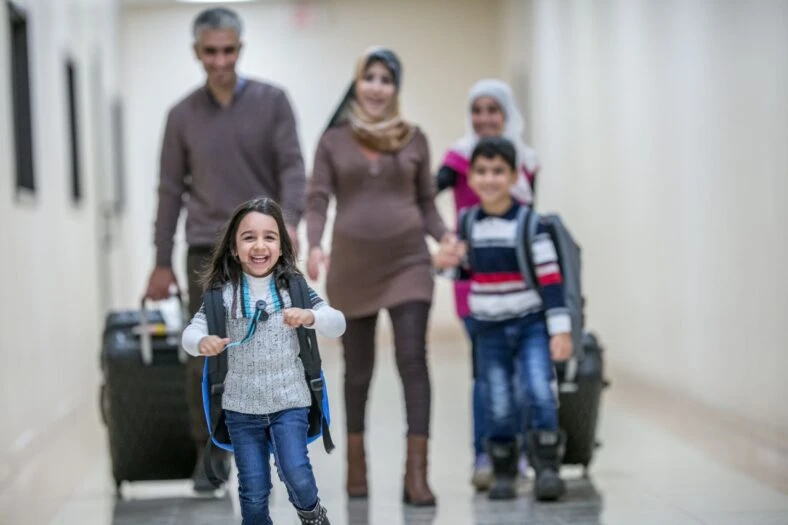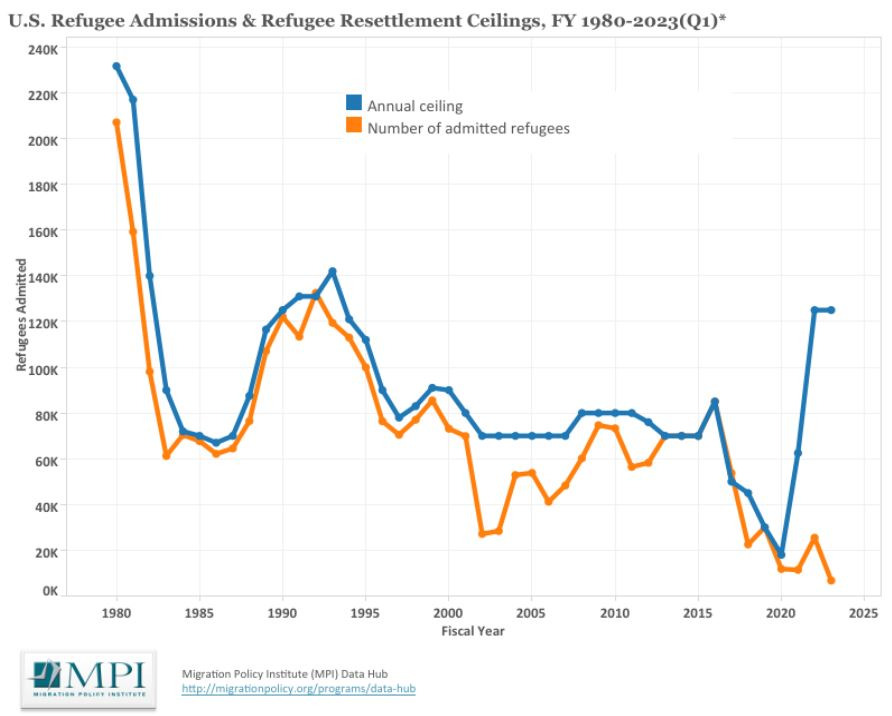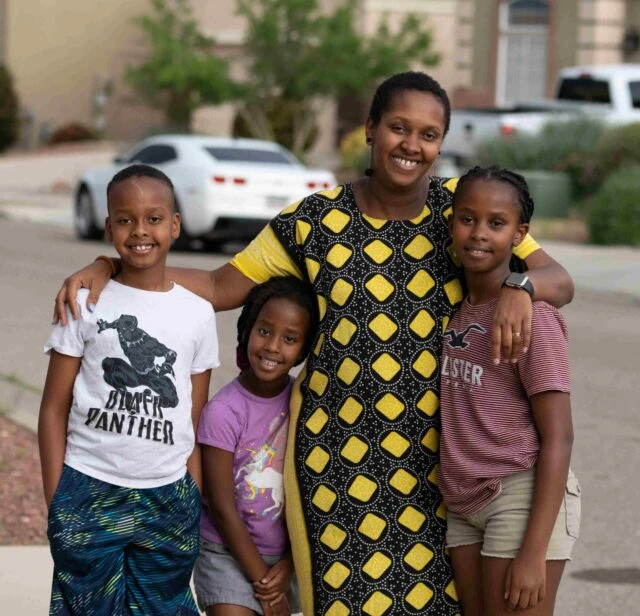New name.
Same mission.
LIRS is now Global Refuge.
Welcoming newcomers since 1939.
See Our EvolutionLIRS is now Global Refuge.
Welcoming newcomers since 1939.
See Our EvolutionThe browser you are using is not supported. Please consider using a modern browser.

Our Long Welcome starts with an ambitious Presidential Determination (PD) on refugee admissions, is facilitated by strong Congressional support and funding for refugee resettlement programming, and is shaped by support at the state, local, and community levels.
The Global Refuge Refugee Admissions Hub is our one-stop-shop for resources on the U.S. Resettlement Program, updates on refugee-related policy and legislation, and upcoming Global Refuge events and initiatives!
The United Nations High Commissioner for Refugees (UNHCR) estimates there are more than 100 million people forcibly displaced across the globe. While most displaced people are internally displaced, 27.1 million are refugees—individuals who have been forced to flee their countries and seek refuge elsewhere. This is similar to the entire population of Texas being displaced.
72 percent of all refugees are from five countries: Syria, Venezuela, Ukraine, Afghanistan, and South Sudan. 69 percent of refugees are hosted by their neighboring countries. Countries hosting the largest number of refugees are Türkiye, Colombia, Germany, Pakistan, and Uganda.
Twenty two percent of refugees, roughly 6.6 million, live in refugee camps. On average, refugees who remain in camps are 36 percent more likely to live below the national extreme poverty line, although finding safe housing and employment outside the camp is very challenging.
Millions of refugees around the globe live in fear and face persecution on the count of race, ethnicity, religion, nationality, gender, and political and social group affiliations. International displacement is driven by a confluence of factors, including inter- and intra- state conflict, political instability, and, increasingly, climate disasters.
Often, there is overlap between some of these factors. However, to qualify for refugee status according to the 1951 Refugee Convention and its 1967 Protocol, a refugee is an individual who “is unable or unwilling to return to their country of origin owing to a well-founded fear of being persecuted for reasons of race, religion, nationality, membership of a particular social group, or political opinion.”
This refugee status definition is foundational to the definitions of refugees codified into national laws across the globe, including the U.S. Parties to the 1951 Convention and its 1967 Protocol are also subject to the principle of non-refoulement, meaning they cannot return persons to their home countries if their lives are threatened or persecuted for the reasons mentioned in the refugee status definition. Importantly, while many refugees are fleeing countries with high climate risk, their status as a refugee would be determined by other factors impacting their displacement since there are no international protections for people displaced by climate disasters. However, there are domestic opportunities for protection pathways available to climate disaster displaced people in the United States, read LIRS’ July 2021 Climate Report to learn more.
The Bureau of Population, Refugees, and Migration (PRM) at the U.S. Department of State manages the U.S. Refugee Admissions Program in coordination with other bureaus at the Department of State and with the U.S. Citizenship and Immigration Services (USCIS).
When individuals flee their countries due to fear of persecution due to race, religion, nationality, political opinion, or membership of a social group, they can qualify as refugees according to the 1951 Refugee Convention and its 1967 Protocol, as mentioned in the previous section.
Refugees are brought to the U.S. through different priority categories, which are explained below:
Priority 1 – While in the host countries, refugees can be referred to the U.S. Resettlement Program by the United Nations High Commissioner for Refugees (UNHCR), a U.S. Embassy, or certain non-governmental organizations. Individuals referred by these entities are referred to as Priority 1 refugees
Priority 2 – Individuals with special humanitarian concerns, as identified by the Department of State, can arrive in the U.S. as Priority 2 refugees. This includes individuals who worked alongside the U.S. government or military overseas as contractors, interpreters, or translators.
Priority 3 – In family reunification cases, individuals who have been separated from family members already in the U.S. can arrive under Priority 3.
Priority 4 – In January 2023, the Department of State and Department of Health and Human Services (HHS), launched a private sponsorship program, Welcome Corps, to increase community participation in the U.S. resettlement process. Refugees who arrive through this program have a Priority 4 designation.
Regardless of the designation, refugees have a series of screenings, USCIS interviews, security vetting, and medical checks prior to their arrival in the U.S.
After the screening and vetting process has concluded, refugees are then connected with resettlement agencies across the United States that welcome the refugees into communities, help them secure housing, find employment, support language learning services, and support their overall integration into their new communities.
Rooted in faith, Global Refuge believes that we are called to welcome those fleeing persecution and seeking refuge in the United States. Resettlement is a life-saving program for the most vulnerable and a practice in devotion for many in receiving communities. Across the U.S., faith communities remain ready and eager to welcome refugees.
At Global Refuge, we welcome refugees because we believe that every person has God-given dignity. We take seriously what the Bible says about welcoming strangers (Matthew 25: 31-40) and we see God-given dignity in every person that we serve. We look to the social teachings of the Lutheran Church and the experience of immigrants in the U.S. to inform our welcome to newcomers.
As a resettlement agency, Global Refuge receives government funding to help welcome newcomers to the United States after the individuals have been identified and screened to enter the United States. Global Refuge also relies upon the generous donations of an incredible network of Global Refuge advocates and donors.
Global Refuge works to welcome refugees into communities that best suit the needs of the refugees. Global Refuge and network partners operate 50 resettlement and placement sites and one remote placement site across the United States – making it the 2nd largest resettlement agency in the United States. Global Refuge network receives government funding that supports our work of welcome through robust case management services for newcomers as they work to integrate into their new communities.
Global Refuge network partners provide critical resources and support for refugees from cultural orientations to enrolling adults in English classes and children in school. Given government funding constraints, the co-sponsorship model of resettlement is also an incredible way that community members and volunteers have stepped up to support the welcome and integration of refugees into communities. The Global Refuge network is also incredibly grateful for the support of private donors and community volunteers who give generously and serve tirelessly and ensure that refugees are welcomed into communities across the country despite funding constraints.
In 1980, the U.S. Refugee Admissions Program was established by Congress through the bipartisan passage of The Refugee Act. The Act amended other immigration laws and created an annual admission limit of 50,000, which could be increased if the President and Congress deemed the global humanitarian situation warranted the resettlement of more refugees in the United States.
The Refugee Act requires that the President annually consults Congress to assess the scope of global humanitarian disaster, sets an U.S. admissions goal based on global needs and congressional funding, and provides a pipeline for internationally displaced populations to lawfully enter the U.S. after extensive security screening and vetting processes. After this assessment and consultation process, the President sets an annual determination, or goal, on refugee admissions for that particular year. The annual determination is often called the “PD.”
The actual number of refugees welcomed to the United States has varied based upon a variety of factors, including the respective administration’s prioritization of the refugee program, the PD set at the start of the year, and Congressional appropriations for the U.S. Refugee Admissions Program. See the Migration Policy Institute’s graph below comparing the PD on resettlement admissions to the number of refugees admitted to the U.S. between 1980 and 2023.

In recent years, there have been many assaults on the U.S. resettlement program.
In October 2020, the Trump Administration limited refugee admissions to 15,000 in fiscal year 2021, with the lowest PD since the establishment of the refugee admissions program.
In 2021, only 11,411 refugees were admitted and welcomed to the U.S.; this is the lowest refugee admissions since the passage of the Refugee Act in 1980. This unsettling outcome, especially given the record refugee flows across the globe, underscores the importance of an ambitious PD on refugee admissions.
The Biden Administration set a higher goal for 2022, with a PD set at 125,000. While the administration doubled the 2021 refugee admissions by resettling 25,465 refugees in fiscal year 2022, the administration fell 80 percent short of their goal.For fiscal year 2023, President Biden set the PD for the admission of up to 125,000 refugees. During this year, significant strides in building capacity and streamlining refugee processing were made and 60,014 refugees were ultimately admitted.
For fiscal year 2024, President Biden again set the PD for the admission of up to 125,000 refugees. With the tremendous groundwork that has been laid to rebuild the program over the past two years, meeting this ambitious target is within reach. This allocation is divided by regions, based on need and in consultation with Congress.
The regional allocations for FY24 are below:
Africa: 30,000-50,000
East Asia: 10,000-20,000
Europe and Central Asia: 2,000-3,000
Latin America/Caribbean: 35,000-50,000
Near East/South Asia: 30,000-45,000
At Global Refuge, we call upon the Biden administration and Congress to stand in solidarity with refugees and will do whatever we can to advocate for an increase in refugee admissions and for a resounding welcome. The administration’s refugee admissions goals cannot be achieved without appropriate funding and support from Congress and agency oversight. Thus, advocates, non-governmental organizations, and resettlement partners alike must hold the policymakers accountable in fiscal year 2024.
Global Refuge is leading the charge on this through 125 Watch, where Global Refuge is tracking refugee admissions and arrivals in the U.S. provided monthly by the Refugee Processing Center. Advocates can also join this effort by writing a letter to the White House, urging them to continue to prioritize strengthening our resettlement capacity and stepping up as a resettlement leader given the record number of displaced people globally.
Speak out for welcome by sending a letter to President Biden and your Congressional Representative today! Encourage President Biden to keep his promise of resettling 125,000 refugees in fiscal year 2024 and tell your Members of Congress that they must prioritize funding for the refugee resettlement program during this year’s appropriations season.
LIRS’s statement for the record submitted to the senate judiciary committee’s subcommittee on immigration, citizenship, and border safety details specific actions members of congress may take to safeguard and support USRAP.
We must continue to prioritize refugee resettlement and reach this year’s admissions goal of 125,000! Contact President Biden to signal your support for refugee resettlement.
Hear the stories of former refugees in their own words. Share on your social networks to bring more attention and support to the refugee journey in the United States.

Explore the many ways to support Global Refuge.
Get InvolvedExplore the many ways to support Global Refuge.
Get Involved